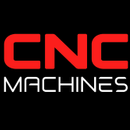3 Easy Ways to Fill the Skills Gap for CNC Machinists

3 Easy Ways to Fill the Skills Gap for CNC Machinists
The demand for CNC machinists continues to grow, but the industry faces a significant skills gap. With new technology evolving rapidly and the number of experienced machinists dwindling, manufacturers need innovative solutions to bridge this gap. Fortunately, automation, streamlined processes, and strategic hiring can help address the skills shortage while improving productivity. Here are three easy ways to fill the skills gap for CNC machinists.
1. Automate Repeated Steps with Full and Semi-Automation
Automation is one of the most effective solutions for addressing the skills gap. By automating repeated tasks, CNC machinists can focus on higher-value activities such as problem-solving and fine-tuning operations.
Semi-Automation with Cobots
Collaborative robots (cobots) can work alongside CNC machinists, helping with tasks such as lifting, loading, and unloading heavy materials. This co-automation allows machinists to delegate repetitive or physically demanding tasks to cobots, reducing the physical strain on workers while speeding up production.
Full Automation for Material Handling
Fully automated systems allow machines to handle everything from feeding raw materials to unloading finished parts and storing them away. These systems can run continuously, even without human intervention, increasing output and reducing the need for skilled labor in manual processes. Automation of these repetitive steps frees up machinists to focus on critical aspects like adjusting settings, quality control, and optimizing production cycles.
2. Streamline the CNC Programming Process
Streamlining the CNC programming process is key to reducing the need for highly specialized machinists while maintaining production quality and efficiency. By making programming more user-friendly, less experienced machinists can still produce high-quality parts.
Simplify CNC Programming
Modern CNC machines come equipped with software that simplifies programming, making it easier for machinists to input job parameters, set tool paths, and adjust speeds and feeds. By streamlining the programming interface, manufacturers can reduce the training time required for new hires while increasing productivity.
AI-Assisted Programming
AI can play a significant role in simplifying the programming process by suggesting optimal toolpaths, cutting parameters, and material settings. This minimizes the learning curve for newer machinists and allows experienced operators to focus on fine-tuning processes rather than spending time on basic programming tasks.
On-the-Fly Adjustments
CNC machinists can further adjust speeds, feeds, and finishing parameters at the machine itself. This hands-on approach empowers machinists to dial in the best settings based on real-time conditions, ensuring quality results while minimizing waste.
3. Hire Problem Solvers and Action Takers
While automation and streamlined processes can address some aspects of the skills gap, hiring the right people remains essential. When recruiting new machinists, focus on candidates who are natural problem solvers and action takers.
Focus on Critical Thinking
As automation and AI eliminate some of the knowledge gaps, CNC machinists will still need to manage unexpected situations, troubleshoot issues, and make decisions in real time. Hiring machinists with strong critical thinking and problem-solving skills is essential for keeping operations running smoothly, especially in complex or custom manufacturing environments.
Train for Execution, Not Just Knowledge
Instead of expecting machinists to have all the answers, focus on training them to execute tasks using AI and software tools. The goal is to shift the role of the machinist from being an expert in every aspect of CNC operations to someone who can effectively manage the production process, troubleshoot problems, and focus on client needs.
Reshoring and Value-Added Focus
As the manufacturing industry moves toward reshoring and increasing local production, focusing on value, cost, and client relationships becomes key. CNC machinists who can align with this focus on customer needs, efficiency, and output will become more valuable, leading to higher wages and career growth.


